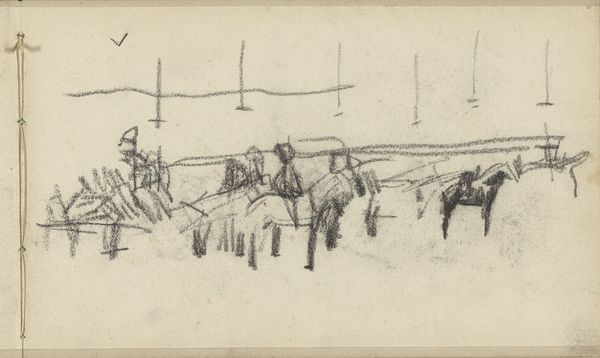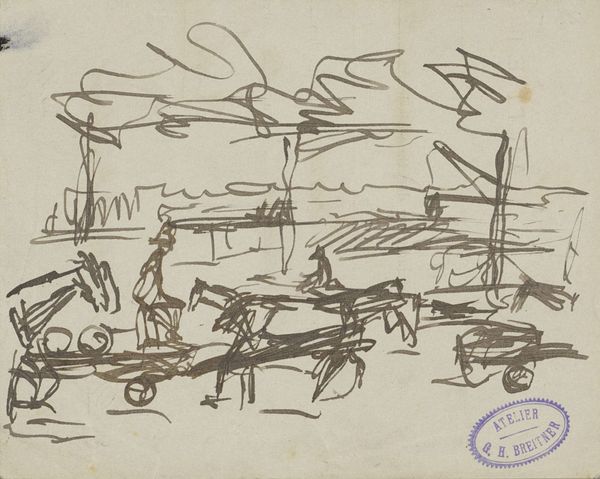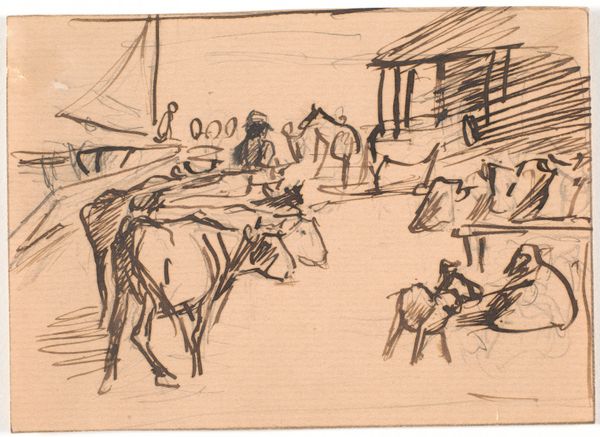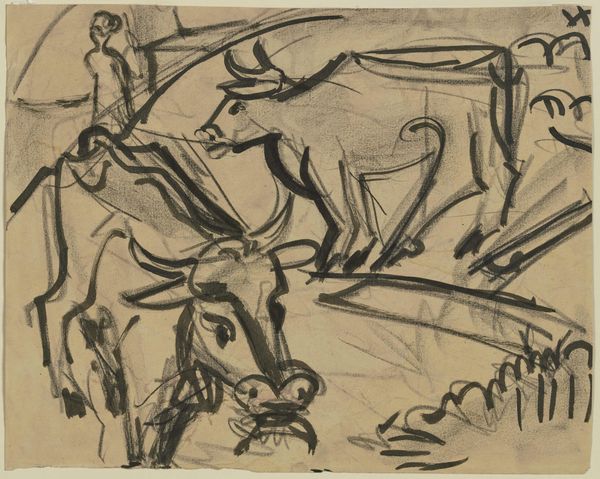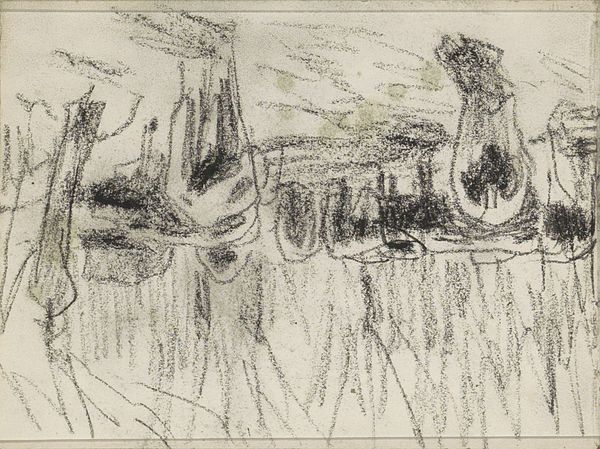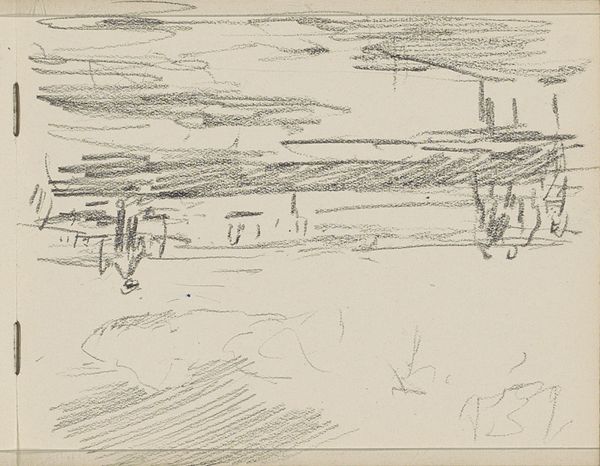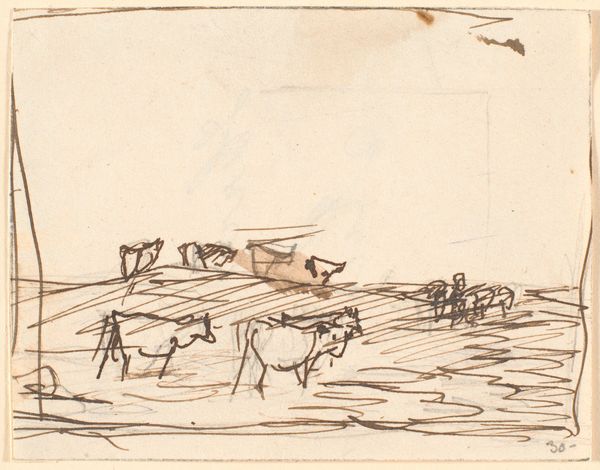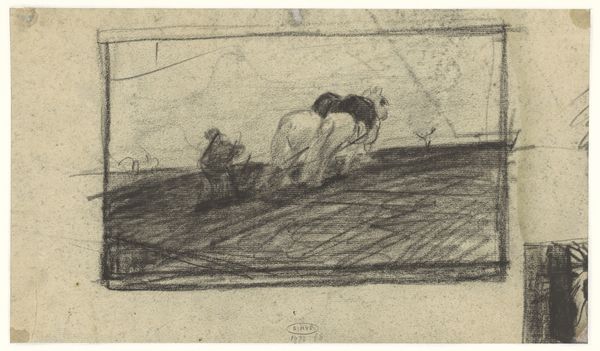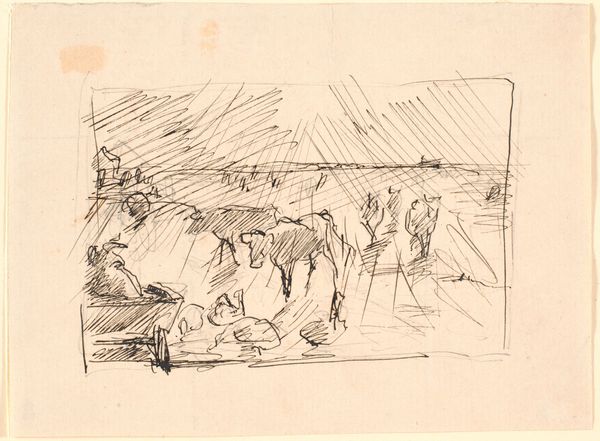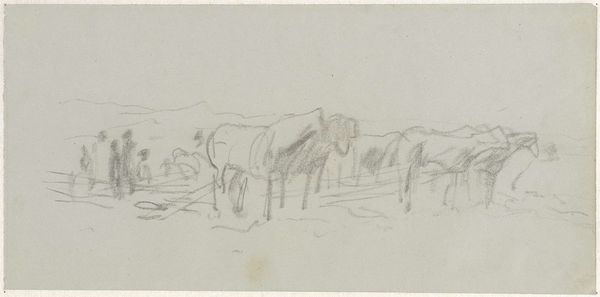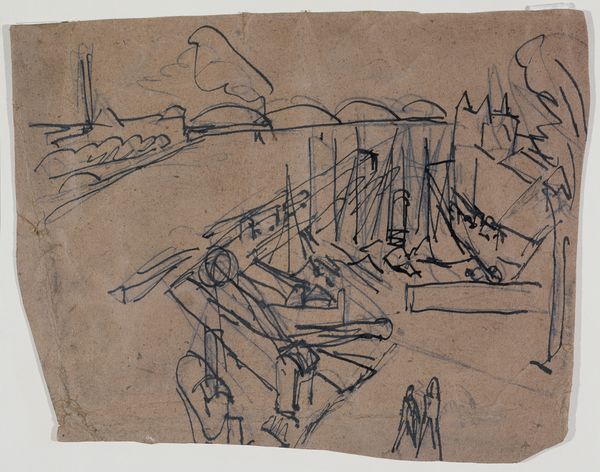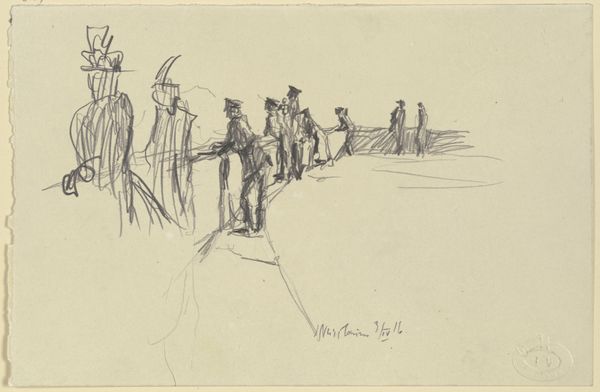
drawing, paper, ink
#
drawing
#
ink drawing
#
pen sketch
#
landscape
#
paper
#
ink
#
realism
Dimensions: 129 mm (height) x 204 mm (width) (bladmaal)
Curator: Immediately, I see dynamism. The lines convey so much movement and life, even in this small pen sketch. Editor: We're looking at Theodor Philipsen's 1908 piece, "Sheep and Calves by the Landing Place on Saltholm," currently residing in the SMK, or Statens Museum for Kunst. It is done in ink on paper. This drawing offers us a lens through which to consider rural life and its entanglement with larger networks of trade. Saltholm was historically crucial to Copenhagen's resource supply, and images like this illuminate how agrarian practices connect to economic systems. Curator: That is all interesting context. For me, the focus is drawn immediately to the strong contrast Philipsen creates with his sparing use of line. There’s an amazing balance achieved through what is suggested versus what is fully rendered, like those blurred reflections on the ground. The cattle are almost diagrammatic but utterly convincing in their posture and weight. Editor: Exactly, we need to ask about what Saltholm represents in Danish national identity and consider the socio-economic realities captured in a seemingly simple sketch of livestock, in a region defined by class and gender inequalities within its rural workforce. Consider too the implications for those reliant on increasingly volatile agriculture under capitalist policies, for these pastoral scenes veil labor. Curator: It's fascinating how you bring the weight of such concerns to what at first seems to be just a sketch capturing a fleeting moment in the field! Speaking formally again, what really sings here is Philipsen’s understanding of perspective. The placement of figures and objects in relation to one another across the picture plane is nothing short of masterful. He uses the minimal lines of the masts and the loading dock as cues to deepen our sense of space. Editor: Absolutely, considering space reveals layers. The open space foregrounding the cows gives way to an increasingly built-up background that represents encroaching industry. Looking at this allows us to deconstruct historical representations of idealized landscapes. Curator: I suppose that is one way to put it, although I maintain its strength also relies simply upon its striking aesthetic achievement. Editor: And, through different analyses, both aesthetic and contextual, this sketch offers us considerable information to expand the way we consider it.
Comments
No comments
Be the first to comment and join the conversation on the ultimate creative platform.
